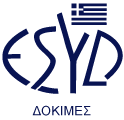 Testing
Cert. no 16
Testing
Cert. no 1612, Tsamadou street
GR-18531 Piraeus
T. +30 210 41 75 865
F. +30 210 41 72 895
info@tsakalidislabs.gr
www.tsakalidislabs.gr
G.E.MI. No: 54730809000
Bivalve molluscs (mussels, cockles, oysters, clams ect) are very delicious and nutricious food. However, the consumption of raw or slightly cooked bivalve molluscs, which are collected from areas with contaminated water, may lead to disease. In the past, the bivalve molluscs were connected with the typhoid and the paratyphoid fever (caused by the bacteria Salmonella typhi and Salmonella paratyphi, respectively) but finding these microorganisms is now rare in developed countries. Nowadays the most common infections associated with contaminated bivalve shellfish are caused from other types of salmonella (causing gastroenteritis) or viruses, such as Norovirus (causing gastroenteritis) and the virus of hepatitis A (which causes infectious hepatitis).
According to the European legislation (Regulation (EC) 853/2004, Regulation (EC) 854/2004, Regulation (EC) 2073/2005) the determination of population of E. coli, as an indicator microorganism is used in live bivalve molluscs for the assessment of the risk of contamination by bacterial and/or viral pathogens.
The determination of population of E. coli is the basis of controls of bivalve molluscs for the protection of public health and is mandatory in both harvesting areas (zones) and consolidation units (cleaning centers). This analysis is defined by the European legislation to be in accordance with ISO/TS 16649-3:2005.
In Tsakalidis Analysis&Testing we are able to offer you the analysis of live bivalve molluscs with method ISO/TS 16649-3:2005, with quality assurance provided by the accreditation, as we are the only private laboratory in Greece accredited for the specific method.
| Parameter | Method | Accreditation |
| Enumeration of Escherichia coli | ISO/TS 16649-3:2005 |
 |


